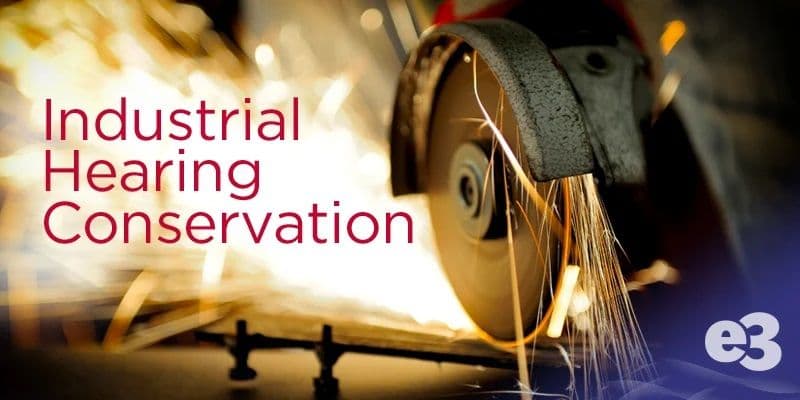Must-Knows for a Successful Hearing Conservation Program

Hearing loss in the workplace is a serious consequence of workers being exposed to damaging noise levels. Consider these statistics:
- An air compressor, from 3 feet away, registers 92 decibels, which would cause hearing loss in less than 2 hours.
- A power drill registers 98 decibels, which would cause hearing damage in about a half hour.
- Power saws can reach an excruciating 110 decibels. To a worker within 3 feet of this noise, permanent hearing loss can occur in under 2 minutes.
- Working on the floor of a factory, workers are exposed to upwards of 100 decibels of noise. Hearing loss can set in after only 15 minutes in this environment.
The Occupational Health and Safety Administration (OSHA) has estimated that $242 million is spent each year on workers’ compensation for hearing loss disability. It is a serious health problem, and both OSHA and the American Speech-Language-Hearing Association (ASHA) realize the important role hearing care professionals can and must play in the development, implementation, and maintenance of industrial hearing conservation programs. The biggest contribution you can make centers around your knowledge of healthy hearing practices.
ASHA describes occupational (industrial) hearing conservation as “the prevention of significant, permanent hearing loss resulting from on-the-job exposure to ototoxic or ototraumatic agents (of which noise is the most common) in workers and military personnel.” Because hearing care professionals are trained to detect the anatomy and physiology of the auditory system, and its response to noise, ASHA asserts that you can step in and assume multiple roles with expertise related to the prevention of hearing loss in the workplace.
To formulate a successful industrial hearing conservation program, ASHA believes a hearing care professional must be proficient in the following areas: - Auditory effects of noise on humans, including noise exposure metrics and damage risk criteria for habitual exposures
- The effects of noise on communication and job performance to include the use of metrics such as Speech Interference Level and Speech Intelligibility Index for predicting the masking of speech by noise
- Community noise criteria (determining noise pollution levels)
- Nonauditory effects of noise on health
- Federal, state, and local noise regulations
- The effective integration of contracting your industrial hearing conservation services when requested by and needed to supplement an employer’s in-house resources
- Knowledge of Worker’s Compensation regulations, trends, and methods of evaluating claims
- Knowledge of personal hearing protection devices and the ability to recommend, correctly fit, and instruct each worker on how to properly use them
- The ability to educate and motivate both management and employees on hearing health best practices
- Capability to utilize noise measurement instruments to conduct noise level surveys onsite
Of course, it always helps to have the right equipment for testing employee hearing. e3 carries a wide variety of OSHA-and-ANSI-compliant industrial audiology equipment from the world-leading manufacturers like Tremetrics and Interacoustics. Check out our occupational health product offerings today and get in touch with your local e3 office to learn more!
